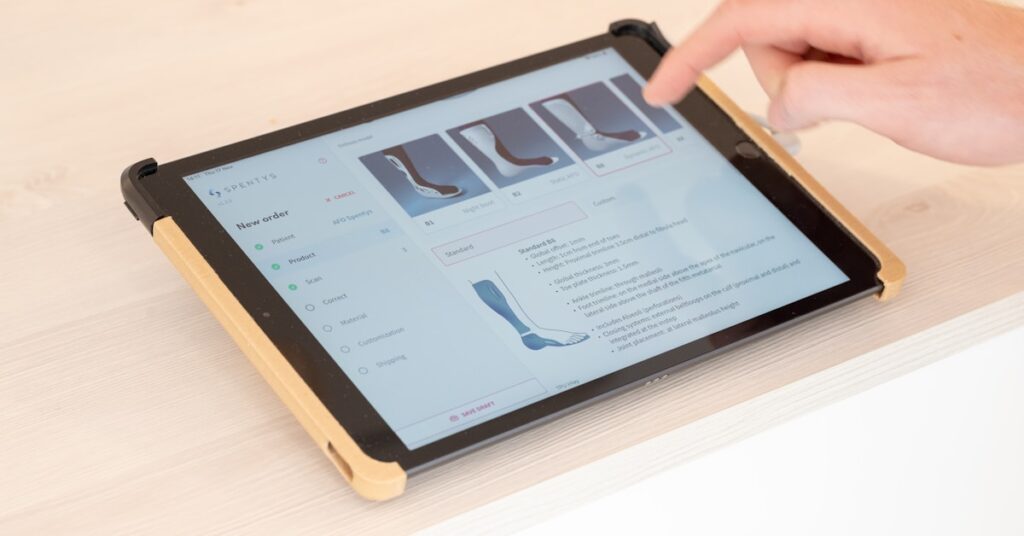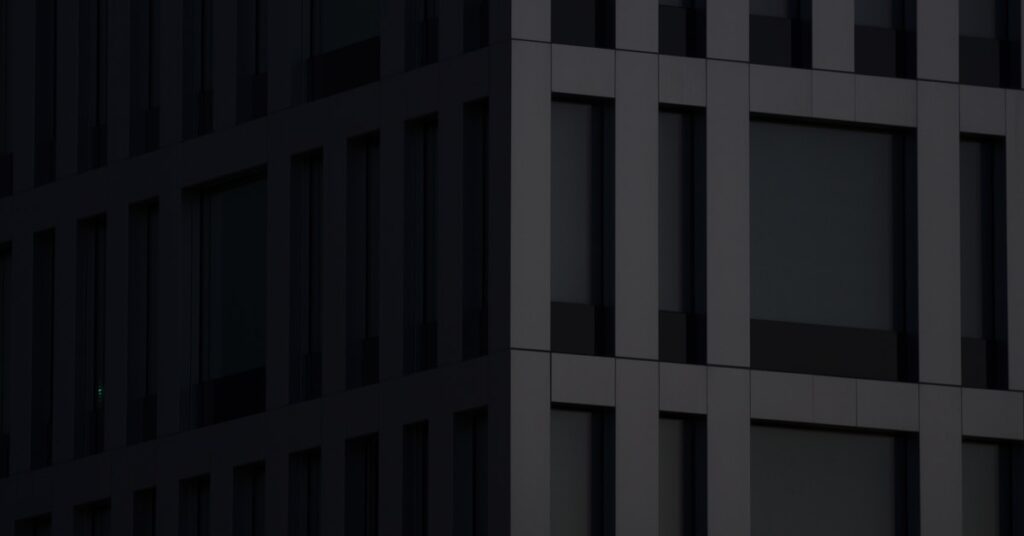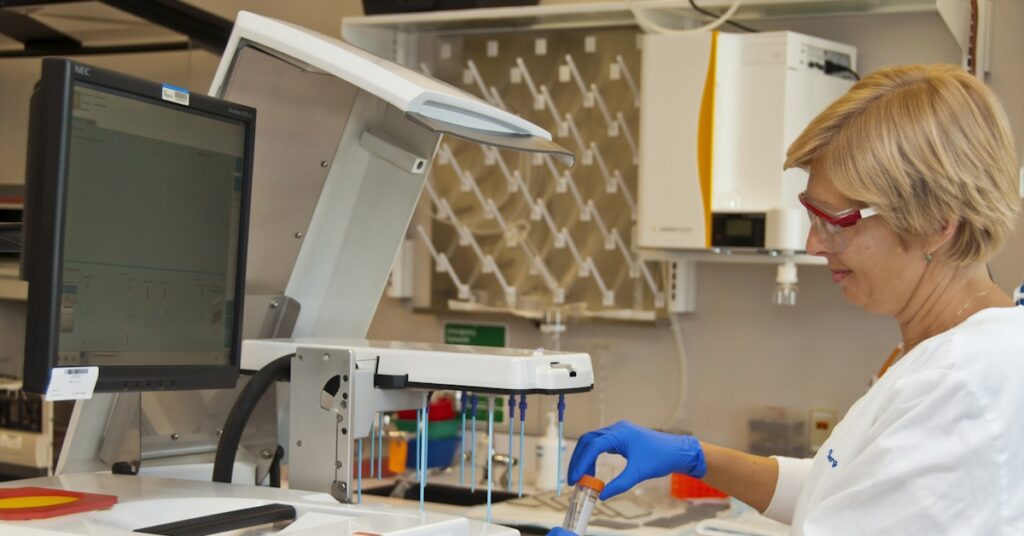Is your current 3D tool holding you back?
Choosing the right software feels overwhelming. Your team’s productivity and the quality of your final output are on the line.
The real fear is investing in a tool that nobody uses, leading to a wasted budget and a team of frustrated designers.
A poor choice doesn’t just slow down projects; it can completely disrupt your entire creative pipeline. The hidden costs of retraining and fixing compatibility issues add up fast.
While we’re discussing the creative pipeline, understanding 3D printing software is equally important for bringing your designs to life.
But the key is to find a tool that fits your workflow, not force your team to adapt to a new, unnecessarily complex system.
In this guide, I’ll break down the best 3D modeling software for 2025. I’m focusing on how each tool meets specific industry and team requirements.
You’ll get clear insights to match features to your goals, ensuring smooth team adoption and a clear return on investment.
Let’s get started.
Quick Summary:
| # | Software | Rating | Best For |
|---|---|---|---|
| 1 | Blender → | Design firms & animation studios | |
| 2 | SketchUp → | Design firms & educational institutions | |
| 3 | Maxon → | Design firms & animation studios | |
| 4 | PTC → | Growing design & manufacturing firms | |
| 5 | Adobe → | Creative teams & design studios |
1. Blender
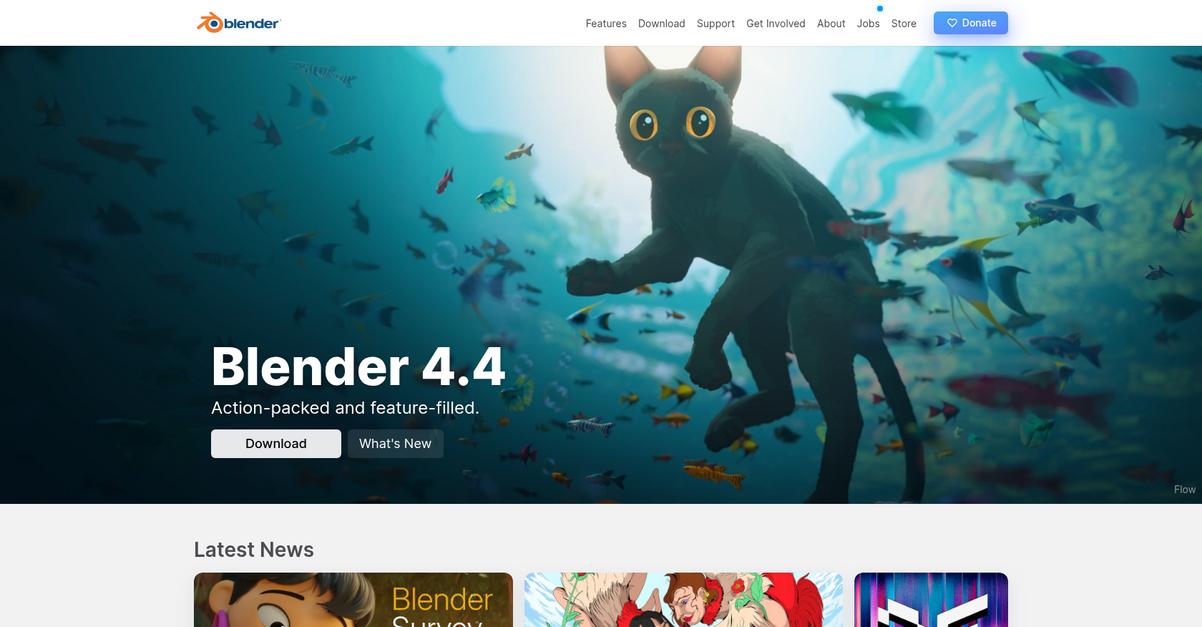
Struggling with complex 3D modeling workflows?
Blender offers comprehensive tools for creating, transforming, and editing your models with ease, directly addressing your team’s feature and usability needs.
This means you can overcome the limitations of your current tools, providing a seamless transition to advanced capabilities. The result? Quicker project delivery and enhanced productivity.
Let’s dive into the solution.
Blender solves these challenges by providing production-ready camera and object tracking, eliminating the need to switch between programs. This allows you to import raw footage, track it, mask areas, and see camera movements live in your 3D scene.
Moreover, its Cycles Render Engine offers stunning ultra-realistic rendering with real-time viewport preview, CPU & GPU rendering, and PBR shaders. Blender also allows direct drawing in a 3D viewport, combining 2D with 3D elements for unsurpassed workflow freedom, especially for story-boarders. This flexibility extends to the interface, which is Python controlled, meaning you can customize layouts, colors, and even fonts, or create custom tools and add-ons using its accessible Python API.
This robust suite ensures your team can achieve seamless adoption and minimize training time.
Speaking of team productivity, my guide on self hosted help desk software explores solutions for efficient operations.
Key features:
- Comprehensive Modeling Tools: Includes full N-Gon support, advanced sculpting tools, and 3D painting with textured brushes, making model creation and editing effortless for your team.
- Integrated VFX Capabilities: Features powerful camera and object tracking for seamless production, allowing real-time preview of tracked footage and 3D scenes within Blender, removing the need for external software.
- Flexible Customization and Ecosystem: Offers a Python-controlled interface for layout and tool customization, plus access to hundreds of community add-ons, ensuring it adapts to your specific workflow.
Blender features, pricing, & alternatives →
Verdict: Blender stands out as the best 3D modeling software because its integrated features, like real-time rendering and robust VFX tools, directly address the pain points of design firms and animation studios. This comprehensive suite ensures enhanced productivity and a minimal learning curve for your team, offering a future-proof workflow solution.
2. SketchUp
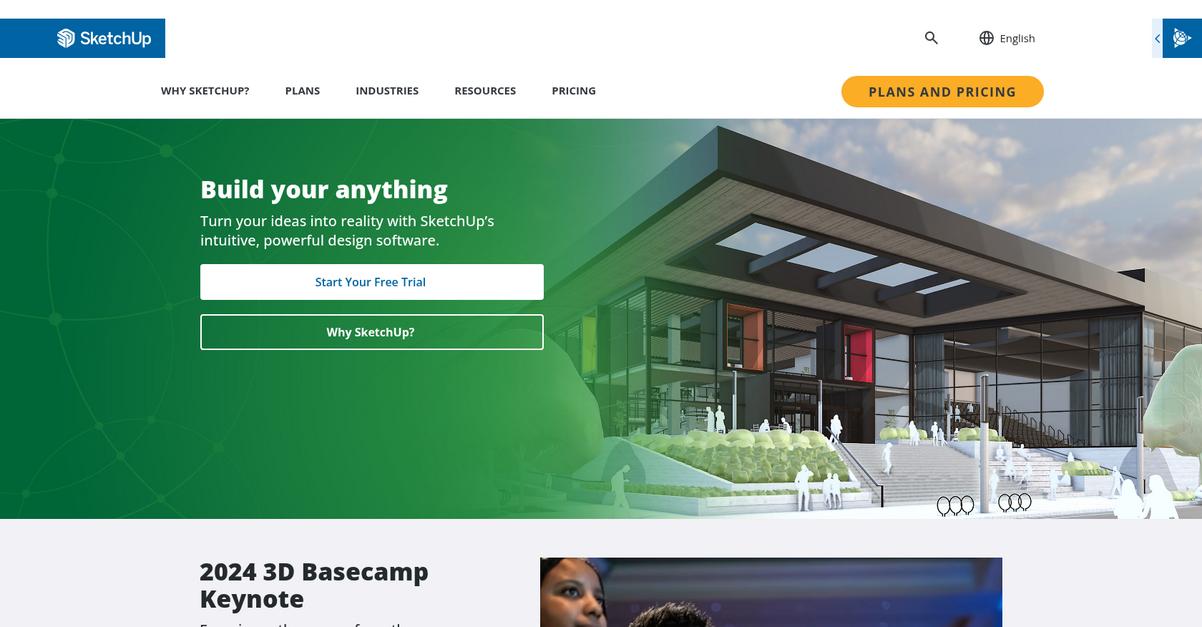
Struggling with complex 3D modeling workflows?
SketchUp offers intuitive, powerful design software to turn your ideas into reality. This means you can give life to your wildest concepts effortlessly.
With SketchUp, you can reimagine what’s possible within 3D modeling software that’s as creative as you. The result is a smoother design process.
Here’s how SketchUp helps your team.
You can compose stunning, photorealistic visuals in real time, making your presentations shine. Additionally, SketchUp helps you win over clients and build consensus with standout presentations.
The platform emphasizes collaboration, allowing you to bring everyone together to refine designs and drive innovation forward. This connectivity across devices lets you model from anywhere, ensuring you have every file you need whether you’re jet-setting or working from home. Plus, SketchUp helps you lead the way with energy-efficient, healthy places by building for the future.
This means seamless adoption and quicker project delivery.
Key features:
- Intuitive 3D modeling: Transform your wildest concepts into photorealistic visuals in real time, enhancing creative output and simplifying complex design processes.
- Collaboration & communication: Bring your entire team and clients together to refine designs, gain consensus, and deliver standout presentations from anywhere, on any device.
- Multiplatform accessibility: Work across various devices, including desktop and mobile, ensuring you always have access to your designs and can model wherever inspiration strikes.
SketchUp features, pricing, & alternatives →
Verdict: If your design firm, animation studio, or educational institution needs to upgrade its 3D modeling workflows, SketchUp stands out as a best 3d modeling software option. Its intuitive design, real-time visualization, and robust collaboration features simplify complex projects and ensure seamless adoption, helping your team deliver projects efficiently.
3. Maxon

Struggling to find the right 3D modeling solution?
Maxon offers tools like Cinema 4D and ZBrush to overcome challenges in advanced feature access and integration. This means your design firm or animation studio can access industry-standard digital sculpting and animation capabilities.
For product managers and creative directors, Maxon addresses the pain point of disparate tools by offering integrated solutions. This helps streamline your workflows and reduce compatibility worries.
Here’s how Maxon smooths your team’s creative journey.
Maxon One provides a comprehensive suite, including Cinema 4D for animation and modeling, and Redshift, a GPU-accelerated renderer. This bundle alleviates the stress of managing multiple vendor subscriptions and licensing.
Additionally, you can leverage Forger, a mobile sculpting and modeling app, enabling your artists to create anywhere. This expands your team’s productivity beyond the desktop. Plus, the newly introduced Cinema 4D Liquids simulation offers dynamic fluid effects, perfect for complex visualizations, and there’s an ArchViz tool in development for real-time architectural previews.
The result is enhanced productivity and reduced learning curves.
Key features:
- Comprehensive Suite: Maxon One bundles Cinema 4D, ZBrush, Redshift, and Red Giant tools, ensuring your team has everything needed for 3D modeling, animation, rendering, and motion graphics.
- Industry-Standard Capabilities: ZBrush provides digital sculpting and painting, while Cinema 4D offers advanced 3D computer animation, modeling, simulation, and rendering software, boosting output quality.
- Mobile and Integrated Workflow: Forger enables mobile sculpting for creativity on the go, and Maxon + Adobe Bundles ensure seamless integration with your existing Adobe creative pipeline.
Maxon features, pricing, & alternatives →
Verdict: If your design firm or animation studio seeks to standardize workflows, Maxon provides powerful, integrated solutions. With tools like Cinema 4D’s new Liquids simulation and the upcoming ArchViz tool, Maxon positions itself as the best 3D modeling software for teams focused on seamless adoption and quicker project delivery.
4. PTC

Struggling with complex 3D modeling workflows?
PTC offers digital foundations to transform product design, manufacturing, and maintenance. This helps you manage product complexity.
Their solutions provide strong collaboration tools for both hardware and software, helping you reduce product development friction and complexity. It’s about building a solid digital foundation.
Here’s how.
PTC accelerates product development through robust collaboration tools. This allows your team to overcome challenges like managing configurations and product variants.
You can also improve supply chain and design collaboration, which enhances manufacturing efficiency. They support collaborative product development and concurrent work across the entire product lifecycle, driving growth. Additionally, PTC optimizes service operations, maximizing uptime and reducing costs.
Ultimately, you deliver more value.
While we’re discussing digital foundations, understanding mobile content management systems is equally important.
Key features:
- Comprehensive Digital Foundation: Provides core solutions for designing, making, and maintaining products, enabling your team to handle hardware and software requirements.
- Product Complexity Management: Offers tools to manage configurations, product variants, software, hardware requirements, and technical documentation, simplifying complex projects.
- Enhanced Collaboration & Efficiency: Facilitates strong collaboration and concurrent work across the product lifecycle, improving product quality, reducing costs, and accelerating innovation.
PTC features, pricing, & alternatives →
Verdict: PTC stands out as a strong contender for the best 3D modeling software, especially for teams aiming to manage complex products and drive efficiency. Their focus on digital transformation, collaborative development, and cost reduction makes it ideal for growing design firms and manufacturing companies.
5. Adobe
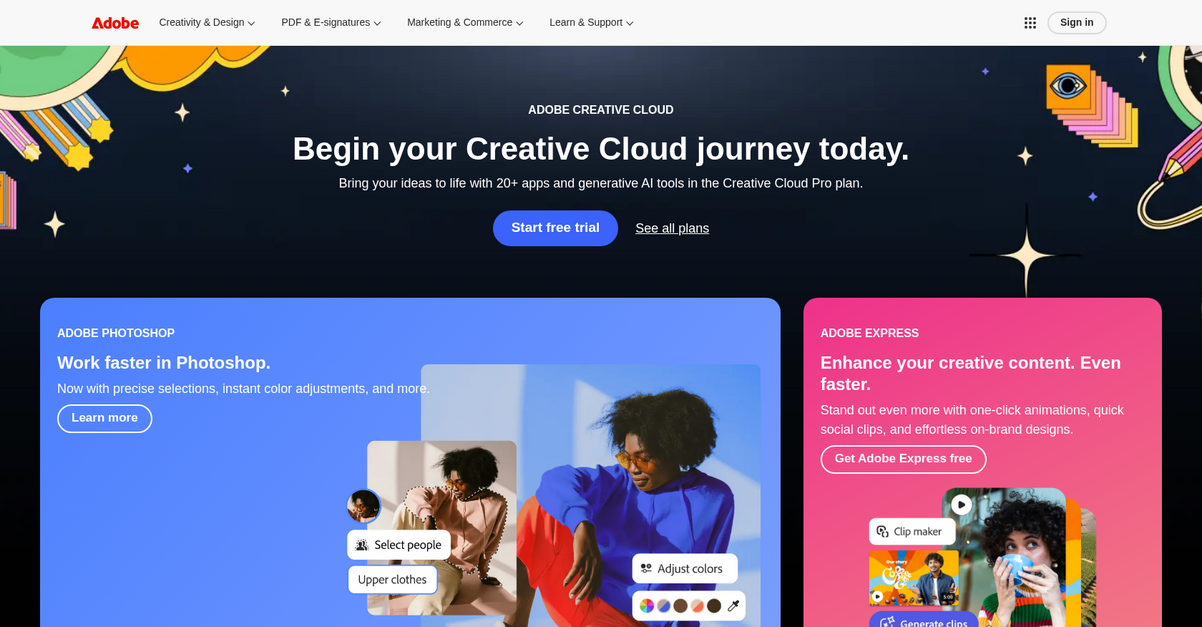
Struggling with complex 3D modeling workflows?
Adobe Creative Cloud offers over 20 applications and generative AI tools. This means you can bring your ideas to life.
For your design firm or animation studio, this translates to working faster in Photoshop, now with precise selections and instant color adjustments.
Here’s how you get things done.
Adobe helps you enhance your creative content quickly and efficiently. You can stand out with one-click animations, rapid social clips, and effortless on-brand designs.
Generative AI tools are also included, providing powerful capabilities for various creative needs. This broad suite of tools ensures your team has everything necessary to support industry-specific requirements, improve productivity, and simplify the learning curve.
Additionally, the Creative Cloud plan offers a comprehensive solution to future-proof your workflows and support ongoing growth. This minimizes training and delivers measurable business impact.
The result? Quicker project delivery.
If you’re also looking into software solutions, my article on best application security tools covers how to spot risks and secure apps fast.
Key features:
- Comprehensive creative suite: Access over 20 applications and generative AI tools to bring your creative ideas to life, simplifying complex workflows.
- Accelerated design capabilities: Work faster with precise selections, instant color adjustments in Photoshop, and one-click animations in Adobe Express.
- Effortless brand consistency: Create quick social clips and effortless on-brand designs, ensuring your visual content consistently stands out.
Adobe features, pricing, & alternatives →
Verdict: If your team is seeking the best 3D modeling software for comprehensive creative needs, Adobe Creative Cloud offers a robust solution. Its integrated suite of 20+ apps and generative AI tools ensures seamless adoption, enhances productivity, and reduces learning curves for diverse teams. This is a solid choice.
Conclusion
Struggling to find the right 3D tool?
I understand the pressure. Picking a platform that fits your team’s pipeline without disruption is a huge challenge for any growing design firm.
The good news is that the market is evolving. The industry is seeing continuous advancements in software functionality and integration, making powerful tools more accessible and effective for teams like yours.
So, what’s my top recommendation?
From all my research and experience, Autodesk consistently delivers the powerful, integrated tools that professional teams need to standardize and scale their creative output.
Its industry-standard tools like Maya and 3ds Max ensure seamless pipeline integration. This makes it the best 3d modeling software for future-proofing your workflows.
For additional insights on unifying your team’s productivity, my analysis of best intranet software provides valuable perspectives.
I strongly recommend you try an Autodesk free trial to see firsthand how its advanced features can empower your creative team.
You will see your project quality improve.
